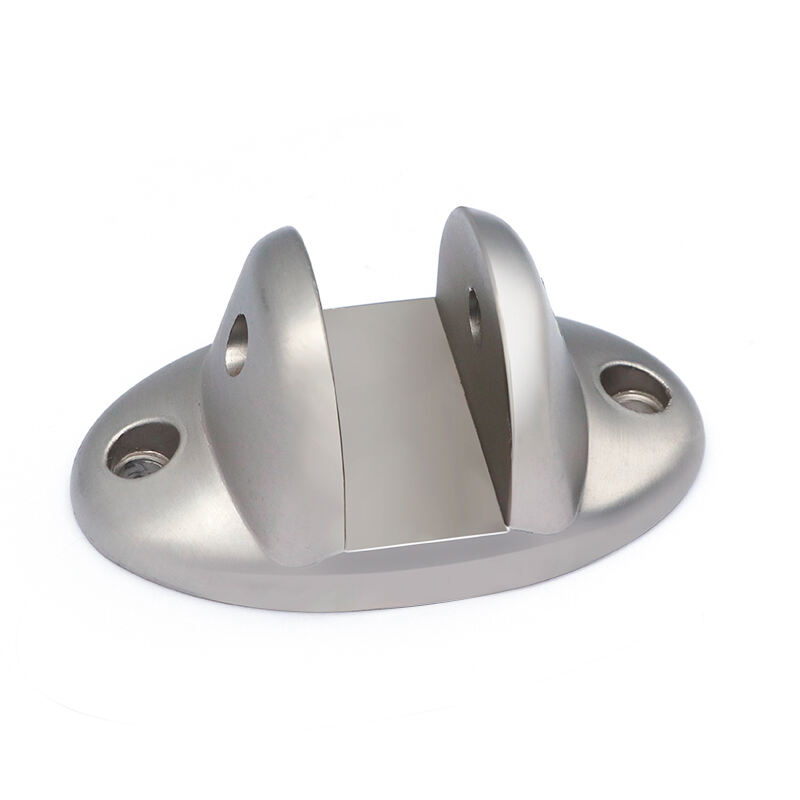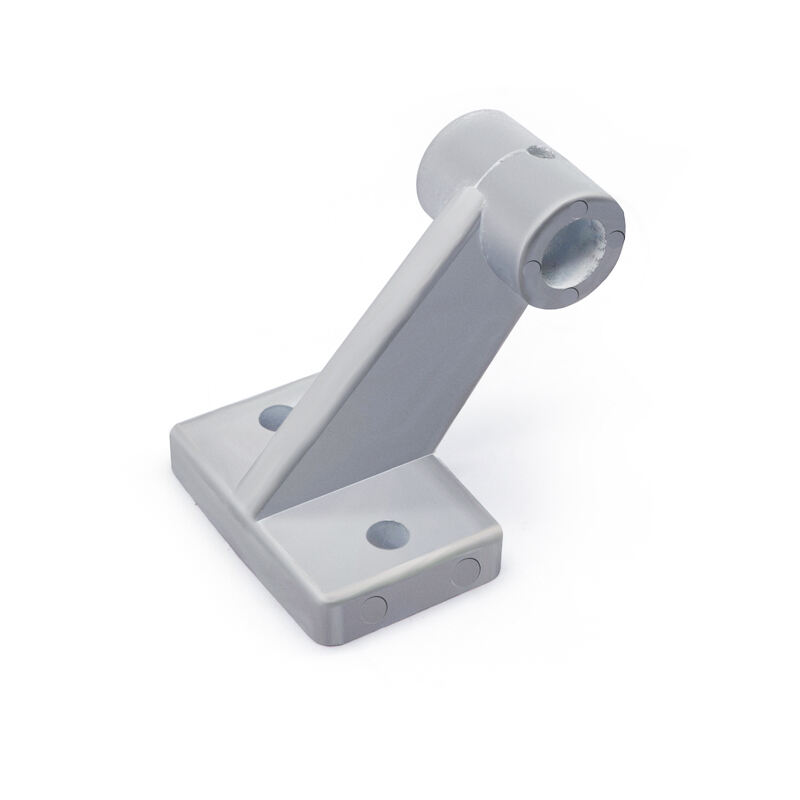Mold Design and Maintenance for Die Cast Precision
How Mold Precision Affects Dimensional Accuracy
Mold precision plays a critical role in ensuring the dimensional accuracy of die cast components. When molds are crafted with high precision, the resultant parts closely adhere to the design specifications, minimizing the need for cumbersome post-processing. Industry data supports this viewpoint, showing that high-precision molds can achieve tolerances below 0.01 mm. This level of accuracy is particularly significant in sectors such as automotive and aerospace, where precision components are essential. Advanced techniques like CNC machining enable the creation of intricate mold features, enhancing precision in die casting and supporting the manufacturing of complex designs.
Importance of Regular Mold Maintenance Routines
Regular maintenance of die casting molds is fundamental to prolong their lifespan and prevent production downtimes. Maintenance involves scheduled inspections and servicing to counteract wear and tear, ensuring the molds continue to produce precise components. Embracing preventive maintenance strategies can lead to a 30% reduction in downtime, significantly saving both time and costs for manufacturers. Essential maintenance activities include cleaning, lubrication, and the replacement of worn components, all of which contribute to maintaining the molds' precision. This routine care is indispensable for upholding the quality of die casting processes, thereby supporting high-quality production outcomes.
Tolerances in Die Cast Mold Manufacturing
Understanding the tolerances involved in die casting mold manufacturing is crucial for producing parts that seamlessly fit together in assemblies. Tolerances in die casting can range from ±0.003 inches or even more stringent depending on specific application requirements. It is vital to collaborate with design engineers during the mold design phase to ensure that achievable tolerances align with the final application requirements of the die cast parts. This collaboration promotes dimensional precision in manufacturing, facilitating the production of components that meet demanding industry standards, especially in high-stakes environments. Such precision is a cornerstone in sectors where the reliability and performance of parts cannot be compromised.
Temperature Control in Custom Die Casting
Maintaining Optimal Die Casting Temperatures
Maintaining optimal die casting temperatures is critical to achieving desired flow characteristics of molten metal, ensuring complete mold filling while minimizing defects. Specific temperatures are necessary for different alloys; for instance, aluminum die casting requires temperatures between 700°F to 1200°F, whereas zinc demands lower temperatures for effective metal flow. Implementing precise temperature measurement tools and feedback systems facilitates consistent thermal conditions throughout the die casting process, thus promoting production efficiency and high-quality outcomes.
To achieve these optimal conditions, industries employ advanced thermal management systems. They ensure the mold retains a uniform temperature, which helps in reducing undesired porosity and dimensional deviations. This regulation of temperature is not merely to prevent defects but also to enhance the longevity and performance of the resulting parts. Proper control techniques become all the more vital in scenarios where fine dimensional accuracy and tight tolerances are needed.
Impact of Cooling Rates on Metal Solidification
Cooling rates significantly influence the microstructure and mechanical properties of die cast products. These rates affect characteristics such as strength, hardness, and wear resistance. Fast cooling can enhance grain refinement, resulting in stronger and more durable parts, whereas slow cooling might lead to undesirable macrostructures that can compromise part integrity. Experts often use simulation software to predict cooling outcomes, allowing adjustments in process parameters to ensure optimal metallurgical properties.
By using these predictive tools, manufacturers can tailor their cooling processes to meet specific requirements. This customization is crucial in sectors where component reliability under physical stress is non-negotiable, like aerospace and automotive. Adjusting cooling rates in line with the material properties ensures that the final products maintain high standards of performance, functionality, and durability.
Thermal Management Systems for Consistency
Efficient thermal management systems are essential for achieving uniform temperature distribution in the die, which directly supports consistency in product quality. Incorporating advanced thermal sensors and automation ensures precise control of die temperatures throughout the casting cycle, resulting in improved consistency. Investing in robust thermal systems not only enhances production rates but also reduces scrap, thereby improving cost efficiency in custom die cast parts production.
These systems, through constant monitoring and regulation, help in maintaining exact temperature levels essential for the casting process. Consequently, this reduces the risk of defects related to thermal imbalance, such as warping or incomplete mold filling. The outcome is a streamlined process that aligns well with production goals and quality expectations, crucial in competitive industrial climates.
Material Selection Impact on Die Cast Precision
Alloy Characteristics and Shrinkage Rates
Different alloys exhibit unique characteristics that significantly influence their shrinkage rates during the cooling phase, directly affecting the final dimensions of die cast parts. This is crucial because shrinkage can alter the precise measurements needed for components, resulting in inconsistencies. For instance, aluminum alloys are known for their relatively low shrinkage rates compared to zinc alloys, which enables higher dimensional accuracy in parts. This attribute makes aluminum a favored choice when precision is paramount in die casting applications. It's essential for designers to thoroughly understand the thermal contraction properties of selected materials, ensuring they specify die cast parts that meet stringent industry standards and fulfill their intended functions without requiring extensive post-casting modifications.
Surface Finish Requirements by Material Type
The selection of materials in die casting determines the required surface finish, as different metals necessitate specific treatments to enhance aesthetic and functional properties. Aluminum die cast components often undergo anodizing to improve corrosion resistance and surface hardness, ensuring durability in challenging environments. On the other hand, magnesium components might require passivation to enhance their surface durability and prevent oxidation. Achieving the desired surface quality is not solely about aesthetic appeal; it also affects the functionality and longevity of die cast parts. Focusing on these surface treatment methods allows for enhanced corrosion resistance, reduced wear and tear, and a prolonged lifecycle of components used in various industries, including automotive and aerospace, where reliability is a critical factor.
Compatibility Between Metals and Mold Designs
The interaction between chosen metals and mold designs is paramount for achieving precision in die casting. Compatibility issues can lead to problems such as warping or premature wear on the mold, which ultimately affects the final product's quality. Metals must be matched with mold materials considering properties like thermal expansion and flow characteristics to avoid defects. For instance, die casting processes need to account for the metal's ability to maintain desired flow rates and thermal compatibility with the mold, reducing potential defects and ensuring consistency. Conducting thorough compatibility tests during the design phase can prevent costly production errors and enhance product quality, making it crucial for manufacturers to invest time and resources into this aspect to capitalize on the benefits of precision die casting.
Optimizing Injection Parameters for Precision
Balancing Speed and Pressure in Metal Injection
Balancing injection speed and pressure is critical in optimizing die casting accuracy and preventing defects. Achieving the right balance ensures that metal flows smoothly within the mold, reducing the risk of voids and misruns. Experts suggest a targeted approach by considering the metal's specific characteristics and design complexities, possibly using simulation software for precision modeling. Additionally, real-time monitoring and adjustments can stabilize the process, significantly improving the quality of die cast parts. This is vital for industries requiring high precision, such as aerospace and automotive manufacturing, where even minor deviations can lead to substantial issues.

Avoiding Porosity Through Pressure Control
Controlling pressure during injection is crucial for minimizing porosity, a common defect in die casting that weakens structural integrity. Proper pressure ensures complete filling of the mold and reduces gas entrapment, which can result in pores within the solidified metal. According to test data, even minor pressure adjustments (within 10%) can significantly influence porosity levels in finished products. By maintaining consistent pressure throughout the injection process, manufacturers can greatly enhance the reliability and performance of die cast components, resulting in durable parts that meet rigorous industry standards.
Cycle Time Optimization Without Sacrificing Quality
Increasing production efficiency through cycle time optimization is pivotal without compromising the quality of die cast parts. Faster cycle times can be achieved by incorporating advanced techniques such as rapid cooling systems and refined mold designs, which ensure parts cool quicker while retaining dimensional accuracy. Studies indicate that optimizing cycle management can bolster throughput by up to 20%. This balance allows industries to meet high-volume production needs while maintaining the stringent precision required by sectors like electronics and automotive, thus enhancing overall operational efficiency.
Operator Expertise in Die Casting Accuracy
Skill Development for Process Monitoring
Operator expertise is paramount in ensuring accuracy in die casting, given the complexities involved in the process. Continuous training in modern techniques and process monitoring is essential for maintaining high levels of precision. By implementing a structured training program, operators can enhance their skill sets to meet challenges specific to die casting environments. Industry benchmarks highlight that skilled operators can detect subtle deviations, mitigating the risk of defects and ensuring quality. Their ability to understand and correct process fluctuations is critical in maintaining the stringent standards required in die casting manufacturing.
Reducing Variability Through Standardized Protocols
Standardized protocols play a vital role in reducing variability during the die casting process. Operators trained to follow set procedures ensure consistent outcomes across production, which is crucial for maintaining die casting accuracy. Implementation of quality control checkpoints throughout production helps uphold standards, allowing issues to be addressed promptly. Statistics reveal that companies adhering to standardized processes experience a significant reduction in defect rates, which can improve their overall profitability. By reducing variability, standardized protocols enhance the reliability of die cast components, crucial for the product's integral performance.
Implementing Quality Assurance Systems
A robust quality assurance system is necessary to ensure that all phases of die casting meet mandated quality metrics, thus enhancing product reliability and reducing waste. Incorporating advanced technologies like automated inspection substantially improves the early detection of defects within the production cycle. According to industry reports, businesses adopting stringent quality assurance processes witness a marked return on investment, brought about by reduced scrap rates and improved customer satisfaction. Quality assurance systems are thus indispensable in modern die casting operations, making sure that each component adheres to precise standards, thereby ensuring durability and performance.
FAQ
What is the importance of mold precision in die casting?
Mold precision is crucial in die casting as it ensures dimensional accuracy of the components, reducing the need for post-processing and supporting high standards required in industries like aerospace and automotive.
How often should die cast molds be maintained?
Die cast molds should undergo regular maintenance routines including scheduled inspections, cleaning, and part replacements to prolong their lifespan and prevent production downtimes.
Why is temperature control important in die casting?
Temperature control is vital to maintain the desired flow characteristics of molten metal, ensuring complete mold filling, minimizing defects, and enhancing the performance of the final cast parts.
How do cooling rates affect die cast products?
Cooling rates impact the microstructure and mechanical properties of die cast products, affecting their strength, hardness, and wear resistance which can be tailored to meet specific requirements using simulation tools.
What factors should be considered for material selection in die casting?
Material selection in die casting involves considering alloy characteristics, shrinkage rates, surface finish requirements, and compatibility with mold designs to achieve precision and adherence to quality standards.

